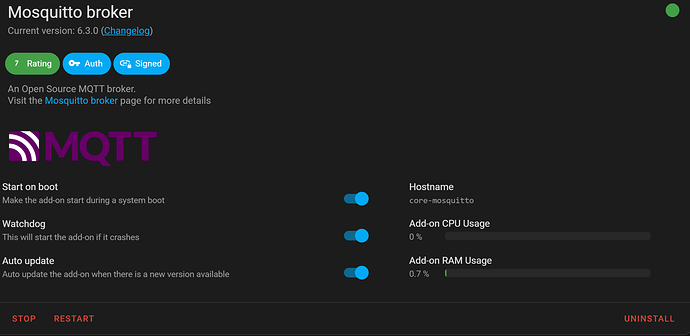Like many of you, I was recently blindsided by Wink’s decision to transition towards a subscription service. For the most part, I only used the Wink hub to control my light switches, which are primarily Lutron Caseta. However, I had a number of Wink Relays as well, and I didn’t want to let capable hardware go to waste, so I decided to spend a few days researching what Home Automation services the Wink Relays could work with. I found Home Assistant, Smartthings, and Hubitat had recently supported workarounds (big thanks to @jimpastos and @joshua_lyon) . Lots of credit goes to a number of other users who contributed to these communities I’ve scoured. With my decision to leave Wink, I needed to purchase the Lutron Hub regardless. However I did not want to spend more money on yet another Hub : Smartthings/Hubitat, so I decided to give Home Assistant a try first. I’m happy I did, as Home Assistant is very powerful and configurable. I’ve now converted 6 Wink Relays, which have been running quickly/stable for days.
As I have benefited greatly from the generosity and knowledge of others, I felt compelled to share my learnings to give others confidence to make the jump. Below are steps I’ve compiled from reading numerous sources I’ve linked/credited at the bottom of my post.
If you have access to an already connected Wink Relay.
Go grab your WIFI IP connection in advance (as you will need this IP later) : Settings>General>About
Now Factory Recover the device
Hold down the Reset Button at the bottom of the device while holding down the top Relay Button
Release the Reset Button while holding down the top Relay Button
You will be brought into System Recovery
- Factory reset devices and wipe data
- Wipe cache partition
- Reset to Factory Image
- Reboot
Re-Connect to your WIFI. DO NOT SIGN INTO WINK . IP should be the same as before. If not, find the IP from your router.
Install and run ADB Tools https://www.xda-developers.com/install-adb-windows-macos-linux/
adb connect 192.168.86.xxx (IP of your Wink Relay)
adb shell
su
su gives you ROOT privileges if your device is already ROOTED
Command below is useful for bringing up default Android Launch Screen :
am start -n com.android.launcher/com.android.launcher2.Launcher
On the default launch screen on the Wink Relay, navigate to Settings>Security>Unknown Sources. This will enable you to install APK files you can find from APKPure.
Back to ADB :
Exit
Exit
adb reboot
Download and transfer the files of your choice. KingRoot is the only mandatory one you need . Below are the ones and versions I found very useful. The adb push command transfers the file from my local machine in my /Downloads/Apps/ directory to the /data/local/tmp/ directory on the Wink Relay. Replace jun3280 with your username/path.
adb connect 192.168.86.xxx
adb push /home/jun3280/Downloads/Apps/KingRoot_v4.96.apk /data/local/tmp/
adb push /home/jun3280/Downloads/Apps/SolidExplorer.apk /data/local/tmp/
adb push /home/jun3280/Downloads/Apps/HomeButton_v2.40.apk /data/local/tmp/
adb push /home/jun3280/Downloads/Apps/NovaLauncher_v554.apk /data/local/tmp/
adb push /home/jun3280/Downloads/Apps/EasyTouch_v4.63.apk /data/local/tmp/
Install the apps you have just pushed :
adb shell
su
cd /data/local/tmp
adb install KingRoot_v4.96.apk
adb install SolidExplorer.apk
adb install HomeButton_v2.40.apk
adb install NovaLauncher_v554.apk
adb install EasyTouch_v4.63.apk
am start -n com.android.launcher/com.android.launcher2.Launcher
On your Wink Relay, navigate to KingRoot and execute the root process.
Download the @jimpastos files to your Downloads directory. Not sure why the files are separate. You can scroll to the bottom my INI and Home Assistant configurations.
Wink Manager : https://github.com/jimpastos/wink-relay-manager/releases/download/v1.2/wink_manager
Wink Ini : https://github.com/jimpastos/wink-relay-manager/archive/master.zip
adb reboot
adb connect 192.168.86.xxx
adb push /home/jun3280/Downloads/wink_manager /sdcard/
adb push /home/jun3280/Downloads/wink_manager.ini /sdcard/
adb shell
su
You will need to go your screen and Accept Root Access (you have only 20 seconds to do this). Once you grant root access to ADB on your Wink Relay, you will see ROOT in your ADB Shell
mount -o remount,rw /system
rm /system/bin/edisonwink
cp /sdcard/wink_manager /system/bin/edisonwink
chmod 755 /system/bin/edisonwink
reboot
If you get weird error messages like being unable to mount you might need to use “ adb kill-server ” and reconnect and/or combination of removing the relay from the way to power cycle. This happened to me a few times when I was getting invalid message for mount, even though I was SU / ROOT.
Congrats. You are all done!
Bonus (If you want to install the Google Playstore – because some Apps require it (eg Blue Iris)):
adb connect 192.168.86.xxx
adb shell
su
cd /sdcard
mkdir gapps
adb push /home/jun3280/Downloads/Apps/gapps.zip /sdcard/gapps/
*Use SolidExplorer to navigate to the Root Directory sdcard/gapps/ and extract the contents
mount -o rw,remount /system
chmod 755 /system/addon.d/70-gapps.sh
chmod -R 644 /system/app/*
chmod 755 /system/app
reboot
The Google Play Store takes about an hour to update and stabilize
adb connect 192.168.86.xxx
adb push /home/jun3280/Downloads/Apps/BlueIris_v2.063.apk /data/local/tmp/
adb shell
su
cd /data/local/tmp
adb install BlueIris_v2.063.apk
Big thanks to @jimpastos and @joshua_lyon for their current solutions to make the Wink Relay operable with Home Assistant and Smartthings/Hubitat respectively. Also, thanks to @TechieFan for his Google Play solution.
wink_manager.ini file looks like this to connect to MQTT in Home Assistant:
#MQTT Login/Password defined in server
mqtt_username=mqttuser
mqtt_password=mqttpass
#Your Relay ID
mqtt_clientid=Relay_01
mqtt_topic_prefix=Relay_01
#MQTT server address
mqtt_address=tcp://192.168.86.83:1883
screen_timeout=20
proximity_threshold=5000
hide_status_bar=true
#Button/Switch State
relay_upper_flags=3
relay_lower_flags=3
send_proximity_trigger=true
send_screen_state=true
debug=true
#log_file=/data/local/tmp/wink_manager.log
Home Assistant Configuration.YAML file
light:
#Relay #01
-
platform: mqtt
name: “Basement Front”
state_topic: “Relay_01/relays/0/state”
command_topic: “Relay_01/relays/0”
payload_on: “ON”
payload_off: “OFF” -
platform: mqtt
name: “Basement Back”
state_topic: “Relay_01/relays/1/state”
command_topic: “Relay_01/relays/1”
payload_on: “ON”
payload_off: “OFF”
MQTT Home Assistant
https://github.com/jimpastos/wink-relay-manager/blob/c7502b2ab21837bd03890188a8a92bdb399f8b2e/README.md
https://community.home-assistant.io/t/toggle-homeassistant-groups-from-wink-relay-buttons/18606/156
Smartthings
https://community.smartthings.com/t/beta-wink-relay-custom-smartthings-integration/111732
https://community.smartthings.com/t/smartthings-running-on-wink-relay/40946
Hubitat
https://community.hubitat.com/t/beta-wink-relay-lan-integration/272
Rooting + Google Play Installation
https://www.youtube.com/watch?v=WRvV4tZxCxo&feature=youtu.be
Rooting + Unbricking Info
https://forum.xda-developers.com/general/general/wink-relay-touchscreen-t3286097
ADB Commands
https://developer.android.com/studio/command-line/adb.html#stopping










